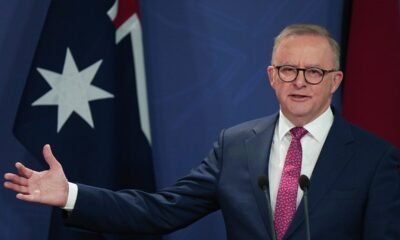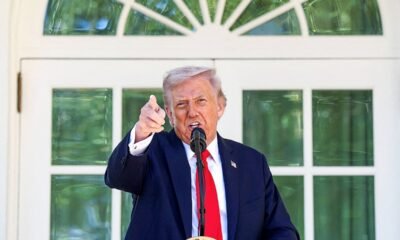INTERNACIONAL
Trump urges Americans to ‘hang tough’ on tariffs plan as markets tumble

President Donald Trump is doubling down on his controversial tariffs program and has called on Americans to «hang tough» amid stock market turmoil over the last few days.
Trump, in a post on Truth Social Saturday morning, wrote that his plan is already working with trillions of dollars already being poured into the U.S. economy.
«We are bringing back jobs and businesses like never before. Already, more than FIVE TRILLION DOLLARS OF INVESTMENT, and rising fast! THIS IS AN ECONOMIC REVOLUTION, AND WE WILL WIN,» Trump wrote.
President Donald Trump is doubling down on his controversial tariffs program and has called on Americans to stay the course amid stock market turmoil over the last few days. (Andrew Harnik/Getty Images)
HERE’S WHAT TRUMP IS REALLY UP TO WITH HIGH-STAKES TARIFF GAMBIT
This week’s steep losses for the S&P 500 and the Nasdaq were among the worst in the past decade as stocks tumbled for a second day in a row. On Friday, the Dow Jones Industrial Average plunged 2,231.07 points, or 5.5%, while the S&P 500 and Nasdaq Composite fell 5.97% and 5.82%, respectively. The Nasdaq entered into bear market territory on Friday.
Trump implemented a 10% baseline tariff on all imported goods into the United States while some countries were slapped with higher tariffs.
But Trump remains defiant that his plan will work in the long term as he aims to reduce America’s trade deficit with other countries, protect American industries and bolster jobs by encouraging companies to move manufacturing back to the U.S.
«HANG TOUGH, it won’t be easy, but the end result will be historic,» Trump wrote. «We will, MAKE AMERICA GREAT AGAIN!!!» Trump wrote.
Trump took aim at China after the communist country clapped back to Trump’s Liberation Day tariff announcement with a reciprocal 34% tariff on U.S. imports.
«China has been hit much harder than the USA, not even close,» Trump wrote. «They, and many other nations, have treated us unsustainably badly. We have been the dumb and helpless «whipping post,» but not any longer.»
Trump’s 34% tariffs announced against China on Wednesday come in addition to the 20% tariffs already imposed against the country.

Trump implemented a 10% baseline tariff on all imported goods into the United States while some countries were slapped with higher tariffs. (Demetrius Freeman/The Washington Post via Getty Images)
HOW WE GOT TO LIBERATION DAY: A LOOK AT TRUMP’S PAST COMMENTS ON TARIFFS
«China played it wrong, they panicked — the one thing they cannot afford to do,» Trump wrote Friday on Truth Social.
The back and forth has raised concerns about a global trade war and possible recession.
The new Chinese tariffs against the U.S. will go into effect on April 10, according to The Wall Street Journal.
Companies who sell their goods to China were hit hard on Friday, including those in aerospace, agriculture and heavy equipment.
Some of Thursday’s biggest losers — banks, airlines and technology companies — sank again on Friday. Others, such as retailers, clothing and restaurants, were down but not nearly as bad. A handful, like Nike, even posted small gains on Friday.

A television broadcasts market news on the floor of the New York Stock Exchange (NYSE) in New York, US, on Friday, April 4, 2025. The S&P 500 slumped 5.97% on Friday, closing out its worst week since COVID. (Michael Nagle/Bloomberg via Getty Images)
CLICK HERE TO GET THE FOX NEWS APP
The so-called Magnificent 7 stocks that have dominated the market the past few years had some of the heaviest losses. Apple, Microsoft, Nvidia, Alphabet, Amazon, Meta and Tesla have lost around $1.8 trillion in market value combined in the past two days.
Meanwhile, a conservative legal group is challenging President Trump’s tariffs on China, calling them «an unlawful attempt» to make Americans pay higher taxes on Chinese imports.
The Fox Business team and The Associated Press contributed to this report.
Global Economy,Donald Trump,China,Economy,Politics,US,Trade,Tesla,Amazon,Facebook
INTERNACIONAL
Jack Smith defends subpoenaing Republican senators’ phone records: ‘Entirely proper’

NEWYou can now listen to Fox News articles!
Former special counsel Jack Smith is standing by his 2023 decision to subpoena several Republican lawmakers’ phone records, calling the move «entirely proper» and consistent with Justice Department policy.
Smith said through his lawyers in a letter obtained by Fox News Digital that the subpoenaed data, known as toll records, belonging to eight senators and one House member were carefully targeted to support his investigation into President Donald Trump’s alleged subversion of the 2020 election.
«As described by various Senators, the toll data collection was narrowly tailored and limited to the four days from January 4, 2021 to January 7, 2021, with a focus on telephonic activity during the period immediately surrounding the January 6 riots at the U.S. Capitol,» Smith’s lawyers wrote Tuesday to Senate Judiciary Committee Chairman Chuck Grassley, R-Iowa.
JACK SMITH INVESTIGATORS NEED TO ‘PAY BIG’ FOR JAN. 6 PHONE RECORDS PROBE, WARNS SEN. GRAHAM
Former special counsel Jack Smith delivers remarks on an unsealed indictment, including four felony counts against President Donald Trump, Aug. 1, 2023, in Washington. (Drew Angerer/Getty Images)
Toll records do not reveal the contents of phone calls but instead reveal when calls were made and to whom.
Smith’s lawyers said that although Grassley, who brought the subpoenas to light, has not reached out to Smith, they felt compelled to write to the chairman to address claims from Republicans that Smith improperly spied on lawmakers.
Grassley responded to the letter, saying he would continue an unbiased probe into Arctic Frost, the name of the FBI investigation that led to Smith’s election-related prosecution of Trump.
«I’m conducting an objective assessment of the facts&law like he says he wants So far we exposed an anti-Trump FBI agent started the investigation/broke FBI rules &only REPUBLICANS were targeted SMELLS LIKE POLITICS,» Grassley wrote on X.
The targeted senators included Republican Sens. Marsha Blackburn of Tennessee, Josh Hawley of Missouri and Lindsey Graham of South Carolina.
In addition to the eight senators, Sen. Ted Cruz, R-Texas, told Fox News’ Sean Hannity Tuesday that he recently discovered Smith also attempted to subpoena his toll records but that his phone company, AT&T, did not hand them over.
DEM REP DEFENDS DOJ OBTAINING GOP SENATOR CALL RECORDS IN 2023: ‘YOU WEREN’T SURVEILLED’
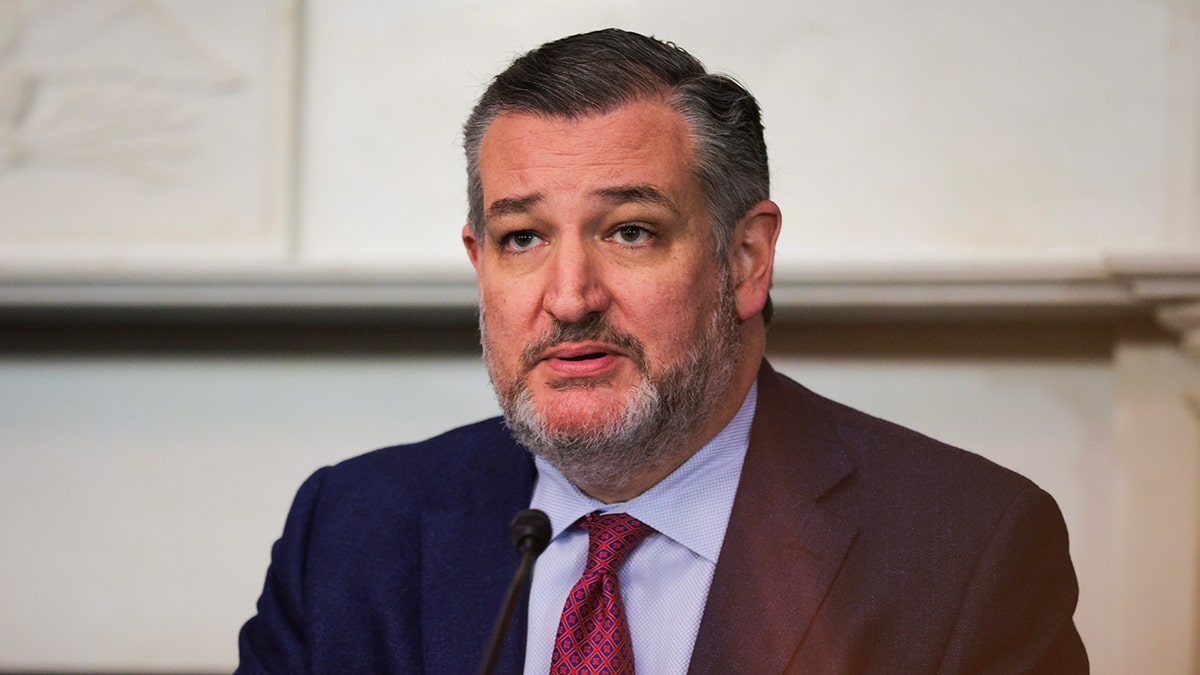
Sen. Ted Cruz, R-Texas. (Kayla Bartkowski/Getty Images)
The Republicans have broadly claimed they were inappropriately spied on, and compared Arctic Frost to the Watergate scandal.
Smith’s lawyers emphasized the normalcy of seeking out phone records and said that public officials are not immune from investigation.
Smith brought four criminal charges against Trump alleging he illegally attempted to overturn the results of the 2020 election, but he dismissed the charges after Trump won the 2024 election, citing a DOJ policy that discourages prosecuting sitting presidents.
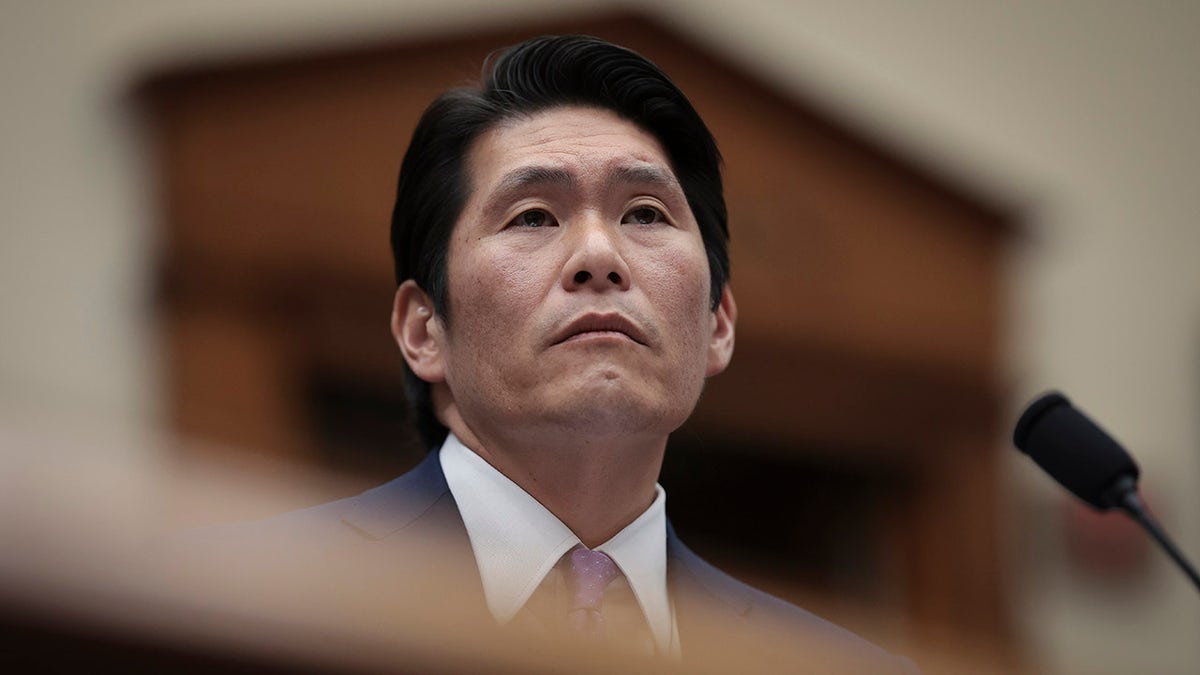
Former special counsel Robert K. Hur testifies before the House Judiciary Committee on March 12, 2024, in Washington. (Win McNamee/Getty Images)
Former special counsel Robert Hur sought toll records during his investigation into former President Joe Biden’s handling of classified documents. The DOJ subpoenaed phone records of former Democratic Sen. Robert Menendez, who is serving prison time after he was convicted in 2024 of corruption charges.
The first Trump administration subpoenaed phone records of Rep. Eric Swalwell, D-Calif., and then-Rep. Adam Schiff, D-Calif., and dozens of congressional staffers from both parties as part of a leak investigation.
Former DOJ inspector general Michael Horowitz warned in a report about the leak probe that lawmakers’ records should only be subpoenaed in narrow circumstances because it «risks chilling Congress’s ability to conduct oversight of the executive branch.»
CLICK HERE TO GET THE FOX NEWS APP
Smith’s lawyers also disputed FBI Director Kash Patel’s accusations that he attempted to hide the subpoenas «in a lockbox in a vault,» noting that the former special counsel mentioned subpoenaing senators’ records in a footnote of his final special counsel report.
«Moreover, the precise records at issue were produced in discovery to President Trump’s personal lawyers, some of whom now serve in senior positions within the Department of Justice,» Smith’s lawyers said.
Read Smith’s letter below. App users click here.
justice department,fbi,senate,chuck grassley,politics,lindsey graham,donald trump,ted cruz
INTERNACIONAL
M. Night Shyamalan sorprende con una película de amor: “Quería hacer algo diferente”
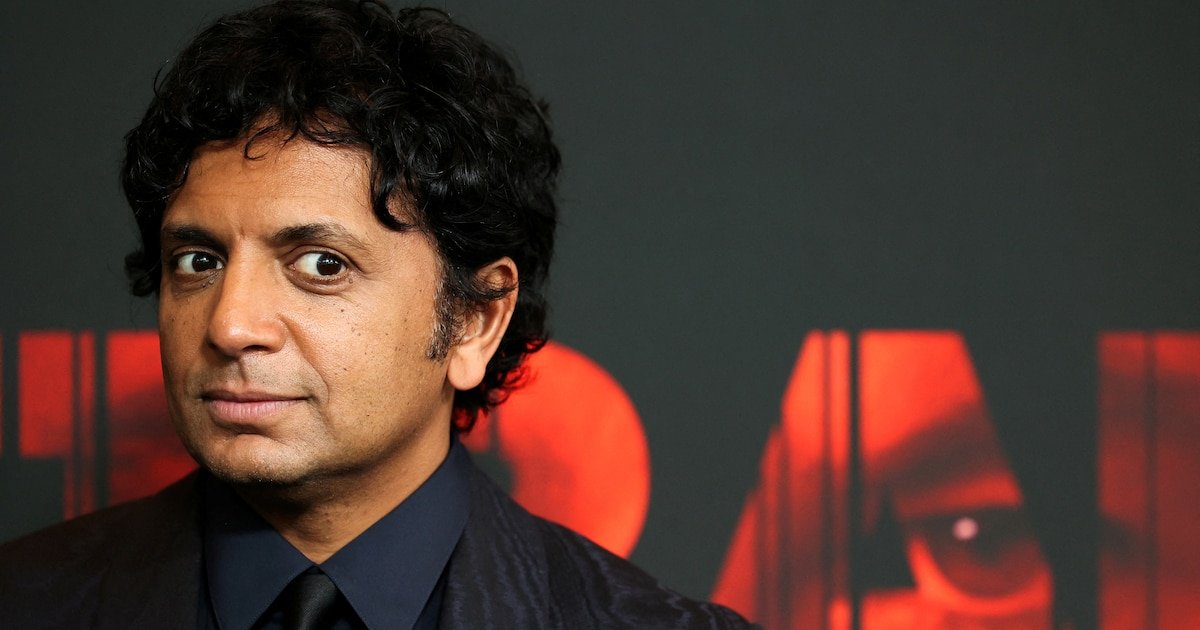
Incluso M. Night Shyamalan —conocido por hacer películas más oscuras como Sexto sentido y Señales”— a veces busca la luz. “Acabo de terminar tres películas realmente oscuras, Viejos, Llaman a la puerta y Trampa, que son historias muy intensas donde los personajes son súper, súper oscuros y complicados, y quería hacer algo diferente”, dijo el director.
Encontró una oportunidad interesante para colaborar en una nueva novela de romance sobrenatural llamada Remain junto a Nicholas Sparks. Sí, ese Nicholas Sparks: el rey de los dramas románticos como Diario de una pasión y Un paseo para recordar.
Los libros coescritos son una tendencia candente en el mundo editorial en este momento. Reese Witherspoon y Harlan Coben tienen una nueva novela. James Patterson se ha asociado con Bill Clinton y Dolly Parton en libros. Sin embargo, esta colaboración es diferente en que Shyamalan escribió el guion y Sparks aceptó escribir una novela basada en esa historia. Una película de Remain —protagonizada por Jake Gyllenhaal y Phoebe Dynevor— ya terminó su producción y se estrenará el próximo año.

“No creo que nadie haya hecho lo que acabamos de hacer, que fue tomar la misma historia e ir simultáneamente a hacer nuestras cosas por separado”, dijo Sparks. “No es de manera lineal. Son dos personas haciendo dos formas de arte diferentes a partir de la misma historia. Confié en él al 100% para hacer la mejor versión cinematográfica posible de esa historia y él confió en mí”.
Ambos se cruzaron hace años cuando le preguntaron a Shyamalan si querría adaptar la novela de Sparks El diario de una pasión en una película. El trabajo terminó en manos de Nick Cassavetes, pero Shyamalan dijo que la obra de Sparks “siempre representó algo mágico para mí”. Significaba algo para él que le confiaran una historia tan querida.
En una entrevista conjunta, Nicholas Sparks y M. Night Shyamalan hablan sobre trabajar juntos, películas de terror y ensalada de pollo. Las respuestas han sido editadas por claridad y brevedad.

—Al principio, ustedes dos trabajando juntos parece una pareja poco probable, pero los géneros sobrenatural y romántico tienen mucho en común.
SPARKS: No somos los primeros en incursionar en esto. La película más grande de 1990 fue Ghost. Shakespeare solía poner fantasmas en sus obras.
SHYAMALAN: Creo que el amor es un concepto sobrenatural. Es una mitología en la que todos creemos, pero sigue siendo una mitología, una mitología sobrenatural de que existe “el indicado”. El “destinado” que conoces en la cafetería y sabes que estaba destinado a ser, y luego todas las cosas que suceden porque se conocieron.
—Night, dices que te acercaste a Gyllenhaal a principios de año para este papel. Cuando lo hiciste, ¿le dijiste que también habría una novela escrita por Sparks?
SHYAMALAN: Debo haberlo hecho. Pero fue un momento tan inusual porque había terminado de escribir el guion, presioné guardar, corrí para subirme al auto e ir a Nueva York para el cumpleaños de mi hija. En el auto suena el teléfono, y es Jake. Y yo, “¿Qué pasa, amigo?” No habíamos hablado en cinco años, o más. Y él dice, “Me encantaría estar en una de tus películas”. Y yo respondí, “Eso es tan raro. ¿Dónde estás?” Y él, “Estoy en Nueva York”. Le dije, “Bueno, yo voy a Nueva York. ¿Quieres tomar un té?”
Tuve la corazonada de que el universo estaba haciendo algo. Así que llamé a mi asistente. Le dije, “Imprime el guion”. Así que solo estábamos tomando té y poniéndonos al día. Y él me contaba lo enamorado que está y lo feliz que está y enamorado. Y le dije, “¿Sabes qué? Toma”. Se quedó en shock. Me llamó dos días después y dijo, “Estoy dentro. Me encanta”. Fue una especie de cosa extraña y hermosa.

—¿El libro sigue el guion al pie de la letra o viceversa?
SPARKS: Como cualquier adaptación, no. Lo primero que dije cuando leí su guion fue, “Oye, esto es genial. Por supuesto, no se parecerá en nada a mi novela. Es completamente diferente”. Night dijo básicamente lo mismo.
SHYAMALAN: Creo que para el público será muy interesante. Podrán señalar las diferencias y preguntar, “¿Por qué Nicholas hizo eso con el personaje y la historia de fondo? ¿Por qué Night hizo esto?” Nuestro diálogo no es el mismo.
—Night, estamos en temporada de Halloween. ¿Hay alguna película —además de las tuyas— que recomiendes ver?
SHYAMALAN: El exorcista, por supuesto, siempre está ahí. Está Juego de inocentes. La casa embrujada, la película de 1963 de Robert Wise. Y la película japonesa Cure.
Fuente: AP
INTERNACIONAL
Australian prime minister’s plane makes emergency landing in St Louis after leaving Washington
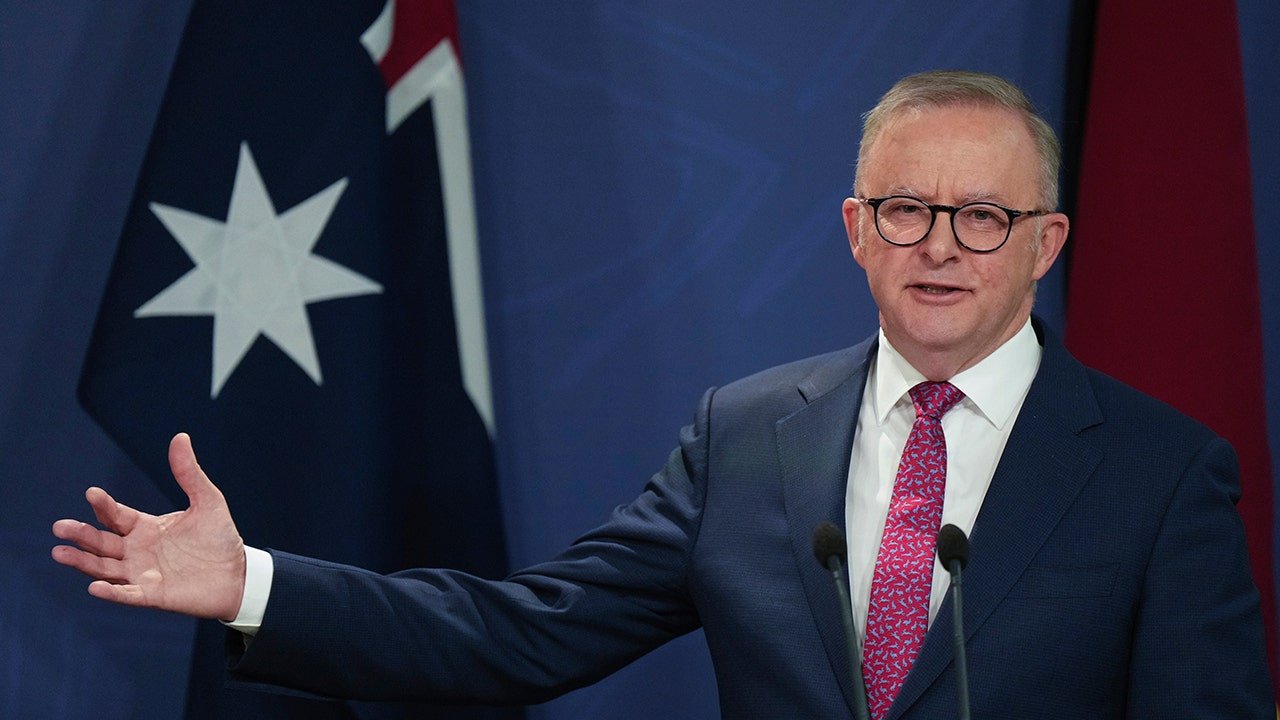
NEWYou can now listen to Fox News articles!
The plane carrying Australian Prime Minister Anthony Albanese had to make an emergency landing Tuesday night after leaving Washington, D.C.
The aircraft, a Royal Australian Air Force KC-30A, diverted and landed safely at the St. Louis Lambert International Airport in Missouri, an Australian Defence spokesperson confirmed to Fox News.
«Our highest priority is providing support to the injured member and request that their privacy be respected,» a statement said.
Officials told local FOX 2 that a crew member was struck in the head by luggage, and it was believed to have fallen from an overhead bin.
TRUMP THREATENS ‘MASSIVE’ CHINA TARIFFS, SEES ‘NO REASON’ TO MEET WITH XI
President Donald Trump, right, shakes the hand of Australian Prime Minister Anthony Albanese during a meeting in the Cabinet Room of the White House, Monday, October 20, 2025, in Washington, D.C. (Evan Vucci)
That crew member reportedly suffered a concussion and was taken to the hospital.
Albanese’s plane had left Joint Base Andrews at 5:15 p.m., FOX 2 reported, and the emergency landing happened around 7:45 p.m.
President Donald Trump and Albanese signed a critical minerals deal at the White House on Monday as the U.S. had been eyeing the continent’s rich rare-earth resources. This, at a time when China is imposing tougher rules on exporting its own critical minerals abroad.
TRUMP ADMIN SLAMS CHINA’S ‘GLOBAL POWER GRAB’ ON RARE EARTHS, THREATENS TRIPLE-DIGIT TARIFFS
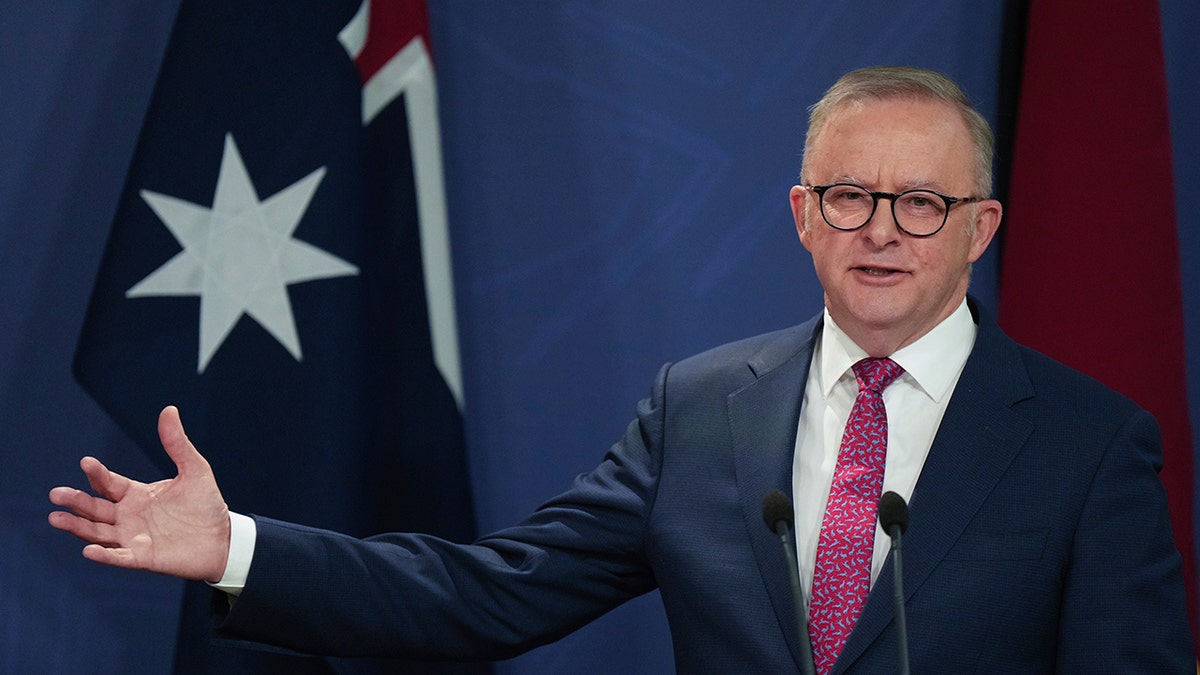
Australian Prime Minister Anthony Albanese gestures during a press conference in Sydney, Australia, Dec. 12, 2024. (Mark Baker, File)
The two leaders described the agreement as an $8.5 billion deal between the allies. Trump said it had been negotiated over several months.
«In about a year from now we’ll have so much critical mineral and rare earth that you won’t know what to do with them,» said Trump, boasting about the deal. «They’ll be worth $2.»
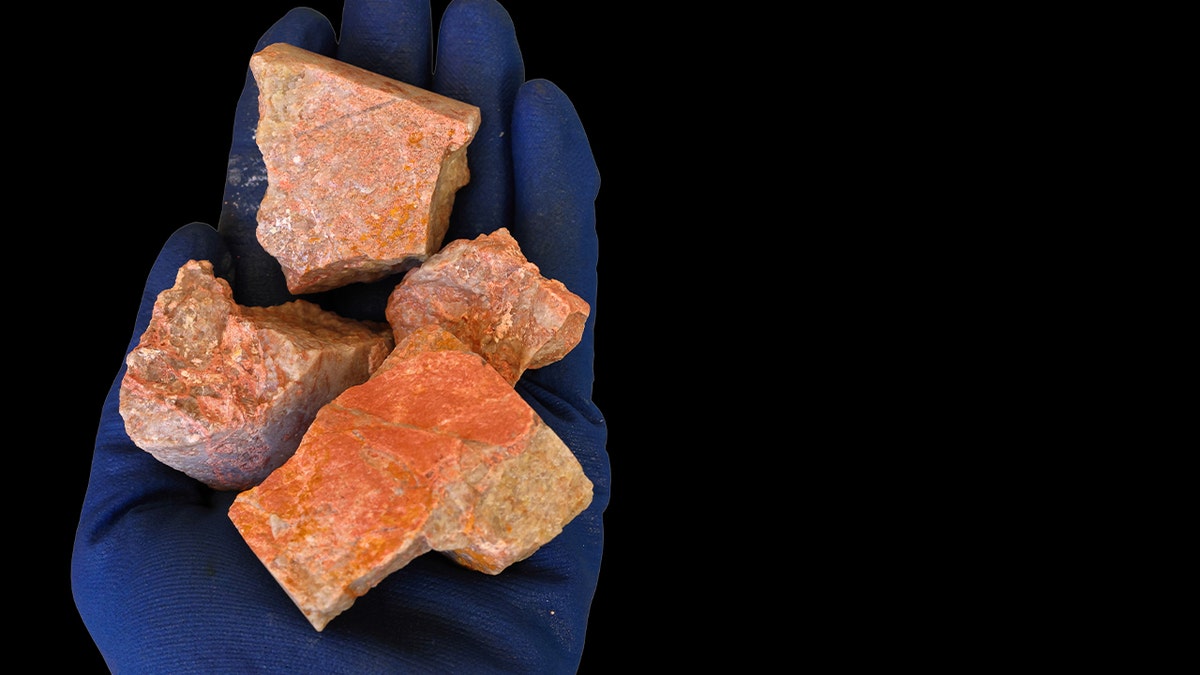
Xenotime is a rare earth element that can be found in Australia. (Getty Images )
CLICK HERE TO DOWNLOAD THE FOX NEWS APP
Albanese added that the agreement takes the U.S.-Australia relationship «to the next level.»
The Associated Press contributed to this report.
st louis,australia,politics,washington dc,foreign affairs,white house,missouri

 CHIMENTOS3 días ago
CHIMENTOS3 días agoLa cruda confesión del Turco Naim a 1 año de la separación de Emilia Attias: «Me di cuenta que hay que aprender a estar solo»

 CHIMENTOS2 días ago
CHIMENTOS2 días agoPampita recibió un video inesperado de su hija Blanca en el Día de la Madre y no pudo contener la emoción

 POLITICA2 días ago
POLITICA2 días agoDonald Trump habló sobre la ayuda económica de Estados Unidos: “La Argentina está peleando por su vida”





